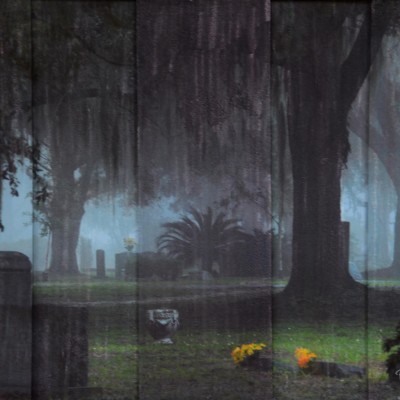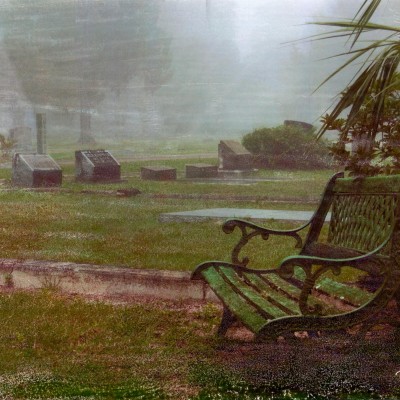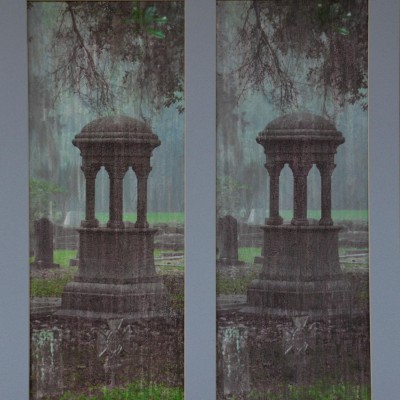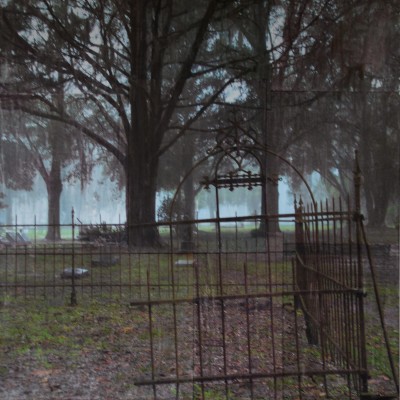Evergreen cemetery is an interesting and intriguing place to visit at different times of the day. Experiencing light casting shadows on the stones and surrounding grounds and the mystic feeling the morning fog created enhanced the effects of the images.
Open Gate – The open gate caught my eye as I strolled around the grounds on a foggy morning. The dichotomy of the open gate in the cemetery, the symmetry of the vertical lines and the unbalanced crooked gate all worked to create this image.
Old Bench – My technique on the image of the old bench helps to emphasize the feeling of aged and somnolent. The framing and mounting of the image gives support to this effect.
Bright Spot – The way the light danced off the branches of the trees and over the grass captured my attention and drew me into this image. The bright flowers and splash of sunlight was a bright spot in an otherwise somber but beautiful setting.
Biography
Bob Senesac lives in Archer, Florida, where he operates custom furniture and cabinet shop and a small studio. A photographer since attending Ohio University in the 70’s he is combining his love of wood and photography in some of his recent works.
The mono types are a unique print made by using a time honored process, the mono type, and photography. He wanted to produce an image which was more than a photograph, but not one which was done with digital tools. The result is an image which is a hybrid between a painting and photograph. He feels the wood frames he builds for the large, multi plate prints are not just a frame but an extension of the print itself. He selects the wood and style of each frame to best fit a specific print. Most of the wood used in the frames is cut locally, stacked, and air dried. The use of wormy long leaf pine and free edge pine in some frames add to the overall uniqueness of each piece.
Creating a Mono Type
Bob Senesac begins the process of producing a mono type by first creating a printing plate. After coating a sheet of acetate with a solution, to which ink will adhere, he then prints one of his photographs onto this plate. This plate is then printed on a sheet of watercolor paper or canvas. During the printing process the image, as well as the brush strokes from coating the plate, are transferred to the paper or canvas. Moisture content and pressure are used to create different textures and effects on the final print. After printing, all the ink is gone from the plate, every mono type is an original. If he were to repeat an image as a mono type, because of the process each resulting print would be different.
Large mono types are composed of multiple printing plates, printed on a large sheet of paper. Senesac divides the photograph into sections and print each section on a separate plate. He then prints each plate onto the watercolor paper one at a time, to produce the large mono type.




